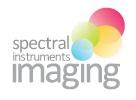Agilent provides xCELLigence impedance-based, label-free, real time cell analysis system and NovoCyte flow cytometers.
Automated microscopy and Spatial Proteomics
Automated microscopy and image analysis
Discover
Related topics
Webinar recording: Deep dive into Spatial Biology with MERSCOPE Ultra Platform

Aug 16, 2024
We invite you to learn more about MERSCOPE Ultra Platform. Webinar featuring Rob Mathis (Global Instrument Product...
Single-Cell Genomics applications ? Ideal work for the WOLF gentle cell sorter

Aug 2, 2024
The field of genomics and computational biology has progressed immensely over the last decade and new single-cell...
Celloger Pro live-cell analyzer: miniaturized and powerful tool for Spheroids and Organoids research

Jul 31, 2024
EV's and Nanoparticles in "Full Spectrum View" with the new Cytek ESP module

Jul 19, 2024
Cytek’s Enhanced Small Particle (ESP) Detection Option expands the capability of your Cytek Aurora or Cytek Northern...
Study finds that automated liquid-handling operations are more robust, resilient, and efficient!

Jul 18, 2024
Liquid handling devices (LHD) improve lab efficiency and accuracy. They automate liquid transfers, increase experiment...
Scaling Whole-Genome Sequencing to >50,000 single cells using cellenONE

Jul 16, 2024
cellenONE technology enabled the creation of tens of thousands of high-quality single-cell genomes, paving the way for...
Automatic, Real Time Acquisition of Bioluminescent Kinetic Curves

Jun 27, 2024
Watch this pre-recorded webinar with Dr. Andrew Van Praagh to learn how our new Aura software feature —Kinetics—...
Theranostics: From Mice to Men and Back

Jun 25, 2024
Recorded webinar
Presenters: Prof. Dr. Ken Herrmann and Prof. Dr. Katharina Lückerath – Moderator: Hannah Notebaert
Orion 2024 AACR poster: 17-plex single-step stain and imaging of cell Lung Carcinoma

Jun 21, 2024
RareCyte Orion is a benchtop, high resolution, whole slide multimodal imaging instrument. A combination of quantitative...
New release now available: Cytek Amnis AI v3.0 Software

Jun 17, 2024
The new Cytek Amnis AI v3.0 image analysis software features an integrated transfer learning algorithm, an option to...

Nov 20, 2017
Two methods for measuring phagocytosis are routinely used, microscopy and flow cytometry. Both techniques measure the capability of phagocytic cell to ingest a fluorescent particle (labeled microorganisms or beads). There are several advantages to using flow cytometry to measure phagocytosis. Microscopy requires time consuming manual counting of ingested particles, which limits the total number of cells analyzed. Conversely, flow cytometry can analyze thousands of cells per second facilitating statistical analysis while offering multi-parametric measurements for simultaneous evaluation of neutrophil features. Finally, neutrophils are easy to prime and activate by manipulation in the lab, which is a necessary process for microscopic analysis of phagocytosis. Flow cytometry allows the measurement of neutrophil phagocytosis in white blood cells without creating artifacts and therefore may be more representative of phagocytosis in vivo. In this application note, we measured neutrophil phagocytosis on the NovoCyte flow cytometer under various conditions and quantified the effect of a potent actin remodeling inhibitor, cytochalasin D.
Related technologies: Conventional flow cytometry
Brand profile
Agilent provides xCELLigence impedance-based, label-free, real time cell analysis system and NovoCyte flow cytometers.
More info at:
www.aceabio.com